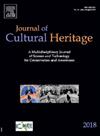Revealing the history of a Mongolian shrine by virtually unrolling Buddhist Dharanis
IF 3.3
2区 综合性期刊
0 ARCHAEOLOGY
引用次数: 0
Abstract
Mongolian Buddhist shrines (mong.: gungervaa) come in a variety of designs, just as the concept of shrines exists across different religions. These shrines are protective containers for icons, such as images or statues of Buddhist teachers, deities, saints, or revered clergy. The central figure is usually surrounded by relics from high-ranking lamas as well as decorative offerings presented by worshippers. Since gungervaas are inherited within the family and offerings are added constantly, they can accumulate diverse sets of items over several generations. It is therefore important to examine and analyze the composition inside and understand each single component. One type of object that is found in gungervaas are Dharanis (spell scriptures). Physically opening these tiny paper scrolls wrapped in silk poses a risk to their preservation, so it is generally not the preferred method. A non-destructive method is needed to decipher the written messages inside. X-ray tomography provides a way to examine the interiors of these fragile objects. By creating a three-dimensional virtual copy, it was possible to analyze and manipulate the content using computer software without harming the scrolls. Finally, text from inside the Dharanis scrolls was successfully extracted and translated.

通过实际展开佛教达尼来揭示蒙古神殿的历史
蒙古佛教圣地(b孟)它们的设计多种多样,就像神社的概念存在于不同的宗教中一样。这些神龛是保护神像的容器,如佛教老师、神灵、圣人或受人尊敬的神职人员的图像或雕像。中心人物通常被高级喇嘛的遗物以及崇拜者提供的装饰性供品所包围。由于gungervaas是在家庭中继承的,并且供品不断增加,因此几代人可以积累不同的物品。因此,检查和分析内部的组成并理解每个单独的组成部分是很重要的。在gungervaas中发现的一种物品是Dharanis(咒语经书)。物理打开这些包裹在丝绸中的小纸卷会对它们的保存造成风险,所以通常不是首选的方法。需要一种非破坏性的方法来破译里面的文字信息。x射线断层扫描提供了一种检查这些脆弱物体内部的方法。通过创建三维虚拟副本,可以使用计算机软件分析和操作内容,而不会损坏卷轴。最后,达拉尼斯卷轴内的文字被成功地提取和翻译。
本文章由计算机程序翻译,如有差异,请以英文原文为准。
求助全文
约1分钟内获得全文
求助全文
来源期刊

Journal of Cultural Heritage
综合性期刊-材料科学:综合
CiteScore
6.80
自引率
9.70%
发文量
166
审稿时长
52 days
期刊介绍:
The Journal of Cultural Heritage publishes original papers which comprise previously unpublished data and present innovative methods concerning all aspects of science and technology of cultural heritage as well as interpretation and theoretical issues related to preservation.
 求助内容:
求助内容: 应助结果提醒方式:
应助结果提醒方式:


